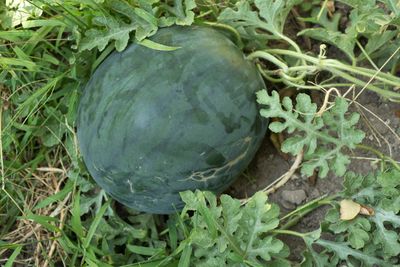Fordhook Hybrid Melon Info
Many of us may look for open-pollinated heirloom types, proven to be wonderful to eat. However, if we have limited time to spend on the watermelon patch, we might consider growing Fordhook melons. This watermelon is drought tolerant once established and needs less care than most. Its taste is compared to that of the Sugar Baby icebox melon, and some say it tastes a little better. Fordhook melon information reminds us of certain considerations of Fordhook watermelon care.
How to Grow Fordhook Watermelons
Before planting this watermelon in the garden, make sure the soil is weakly acidic and alkaline, with a pH of 6.5 to 7.5. Take a soil test if you don’t know the soil pH. Prepare soil by tilling and removing rocks. Remove all weeds and add well-finished compost to enrich the soil. Don’t plant until the soil warms to 61 degrees F. (16 C.) and all chance of frost has passed. Choose a sunny spot where the first morning sun lasts until noon, or around 2 p.m. in cooler zones. Melons can potentially get sunburn in higher zones on hot afternoons. Plant seeds or seedlings about 8 feet (2 m.) or so apart to accommodate a big root system. Leave room for vines to stretch out roughly 6 feet (2 m.) or further.
Fordhook Watermelon Care
Keep soil moist until seedlings or transplants have developed a hardy root system. Even drought-tolerant plants need regular watering when first planted. At this point, you might neglect watering a day or so. Check to see if the soil has dried out before leaving the watering to another day. When to water your melon patch will depend a good deal on how hot days are in your area. Fordhook watermelon is a vigorous grower and you don’t want to slow growth by lack of water. Fruits are usually ready to harvest in about 74 days and will generally weigh about 14 to 16 pounds (6-7 kg.).
